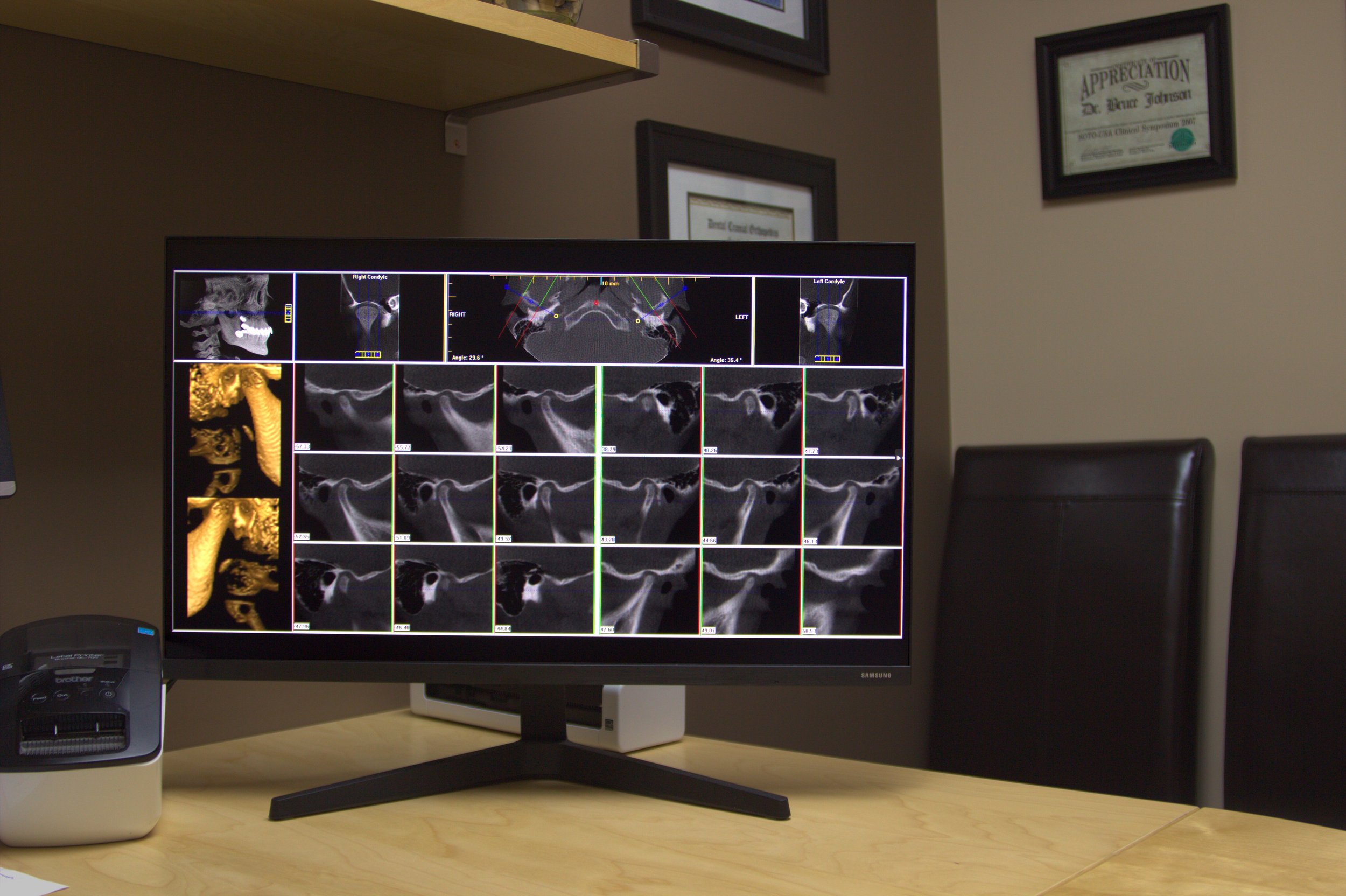
TMJ
Jaw Joint Disorder Treatment
A jaw joint disorder is a syndrome created by the dysfunction of the lower jaw as it relates to the upper jaw.
The significant elements in the system are the upper
and lower jaws, the jaw joints, the teeth,
and the related muscles
-
The Symptoms
Here lies the complexity of this syndrome. Signs and symptoms are many and varied. Few people have the same ones. Many of the signs and symptoms are distant, and therefore thought to be unrelated. There are four groups of signs and symptoms that are commonly reported.
Joint symptoms like clicking or popping or pain in the joint(s).
Related muscle symptoms, like facial pain and headaches.
Tooth related symptoms, like sensitivity, receding gums, grinding, and clenching.
Skeletal symptoms, like neck and shoulder pain, ear pain, back pain, and poor posture. -
The Causes
A misalignment in the bite between the upper and lower teeth forces the jaw out of normal position. As the muscles and joints attempt to compensate, symptoms develop. The causes of the misalignment are as numerous as the potential symptoms; some examples are:
Growth and development influences
(i.e. down and backward facial growth)Airway related influences
(i.e. mouth-breathing, sleep disordered breathing)
Deleterious Habits
(i.e. thumb-sucking, tongue chewing)
Trauma
(i.e. car accident, head injury)
Myofunctional Disorders
(i.e. tongue thrusting, dysfunctional swallowing)Previous dental treatment that adversely impacted the bite relationship
Other factors like stress, also play a role by intensifying the effects produced by the dysfunction. Further, symptoms like grinding will change the anatomy of individual teeth, thus worsening bite misalignment.
-
Diagnosis
The diagnostic regimen utilized by Dr. Johnson consists of an oral examination, photographic survey, 3D cone-beam scan, models of the teeth oriented to the position within the skull, and dental and medical history.
-
The Treatment
Treatment usually involves two phases.
Phase I is diagnostic and therapeutic in nature. It commonly consists of an appliance that is worn over the lower teeth. The purpose of this appliance is to "re-align" the lower jaw such that the stresses on the joints and muscles are relieved.
Phase II is stabilization, which involves altering the teeth such that the bite is correct without the orthotic. This can involve orthodontic treatment, restorative treatment, or some combination of both. Sometimes only an adjustment to the biting surfaces of the teeth is required to effect the change.
